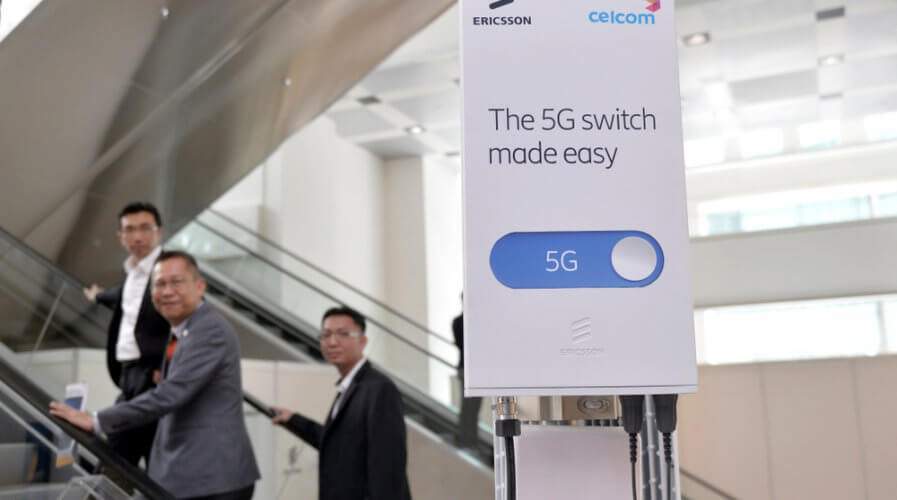
Everyone is chasing 5G, but does it harm to be late to the party? Source: Shutterstock
Should telcos or customers worry about being late to the 5G party?
TELECOM companies in the US, the UK, Singapore, Hong Kong, Malaysia, Australia, China, South Korea, and every other country in the world is working on upgrading their infrastructure to prepare for the arrival of 5G.
In light of the US-China trade war, Huawei’s 5G hardware has met with regulatory challenges in some parts of the world, slowing down adoption and/or increasing costs for some countries where telecom companies are deciding to switch to providers such as Ericsson and Nokia.
Japan’s SoftBank, for example, has recently avoided trusted 4G rollout partners Huawei and ZTE on its 5G rollout plan, an announced an alliance with Nokia as a strategic partner and Ericsson as a supplier of radio access network equipment instead.
According to analysts, since bans on the use of 5G equipment from Huawei is a national strategy in countries such as Japan and New Zealand, the switch to more expensive vendors such as Nokia and Ericsson will impact all telecom companies equally.
“You can also expect Docomo and KDDI [other key telecom providers in Japan] to follow suit. So SoftBank isn’t going to be at a cost disadvantage,” said Tokai Tokyo Research Center Analyst Masahiko Ishino.
On the other hand, Malaysia and Singapore have both recently decided to stay invested in Huawei as a key telecom partner and 5G equipment provider.
Malaysian Prime Minister Mahathir Mohamad re-inforced support for Huawei 5G technology at the recent Future of Asia conference in Tokyo, Japan.
“Huawei’s research is far bigger than Malaysia’s capability. We will make use of their technology as much as possible, said the Malaysian PM, dusting off concerns over allegations of espionage saying “we are an open book”.
Truth be told, although Huawei is losing a few key clients such as SoftBank to competitors, the telecom equipment provider might end up retaining a larger share of the 5G network pie by the end of 2022 when the dust settles.
Singapore’s telecom company M1 said that it will be using Huawei for its 5G network as it makes commercial sense.
M1’s newly appointed CEO Manjot Singh Mann said he believes that tomorrow’s 5G services will be “vendor agnostic” as there are multiple players developing equipment.
The race is on, but is it necessary?
Either through continued partnerships with Huawei or with new alliances with Ericsson and Nokia, telecom companies are trying to leapfrog into the 5G era.
However, the question is whether or not the rush is critical to the survival of telecom companies or their customers.
At face level, the quest to be first is logical — many competitive advantages have been lost as a result of the sluggishness of companies and their lack of drive for new and innovative technologies.
Given the incredible anticipation for 5G, launching such services seems critical to retaining customers and reinforcing market leadership for telecom companies.
Although, on taking a deeper look, skipping the race to 5G might not seem like a bad idea.
For 5G to be really useful, it needs hardware that most consumers don’t yet have.
Businesses too, although eager to explore 5G, neither have the hardware nor the bandwidth to deploy 5G-powered projects at scale in the immediate future.
Further, for an effective 5G infrastructure setup, the network towers need to be placed more densely than any of the previous generations. This not only means more 5G will cost more but will also take longer to deploy across large areas — a big concern for countries such as Malaysia and Australia (less of a concern for Hong Kong and Singapore).
Overall, the more experts discuss the topic, the more they believe that being late to the 5G party might not be such a bad thing after all.
Once first-mover telecom companies or 5G pioneers set up part of their infrastructure, new models might be created to reduce costs, increase network efficiency, and reduce overall stress on companies as well as users.
READ MORE
- Safer Automation: How Sophic and Firmus Succeeded in Malaysia with MDEC’s Support
- Privilege granted, not gained: Intelligent authorization for enhanced infrastructure productivity
- Low-Code produces the Proof-of-Possibilities
- New Wearables Enable Staff to Work Faster and Safer
- Experts weigh in on Oracle’s departure from adland






